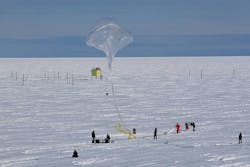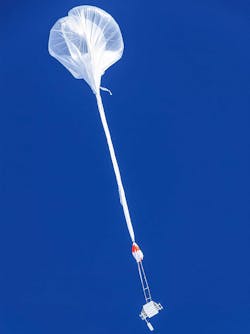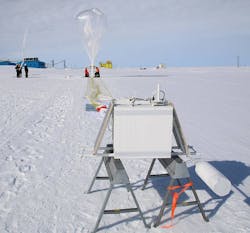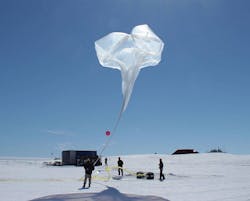NASA sending two scientific balloons into Antarctic anticyclone
WALLOPS ISLAND, Va., 17 Dec. 2015. NASA’s annual flight campaign under the Scientific Balloon Program is taking off in Antarctica. NASA scientists are launching two balloons with scientific instrument payloads into an anticyclone, a weather phenomenon characterized by high atmospheric pressure at its center, around which air slowly circulates in a counterclockwise pattern in the southern hemisphere (clockwise in the northern hemisphere).
"The anticyclone takes our balloons on a circular flight trajectory, keeping the balloon over the Antarctic land mass for extended periods of time," describes Debbie Fairbrother, NASA's Balloon Program Office chief. "Keeping the balloon over land helps enable recovery of the payload at the conclusion of the mission."
Campaign preparations began on-site at McMurdo Station, Antarctica, in mid-October for the two science missions NASA has scheduled to fly from the continent. The balloon launch team is standing by flight ready and approved for launch, pending the formation of the anticyclone, which is expected by mid-December.
The two flights will take the Gamma-Ray Imager/Polarimeter for Solar flares (GRIPS) and the Stratospheric Terahertz Observatory (STO-II) payloads to altitudes around 130,000 feet, which is above more than 99.5 percent of the Earth's atmosphere.
GRIPS will collect data on the extremely high-energy particles released by solar flares, information that will help scientists pinpoint the processes that set off these explosive events. The mission is funded by the NASA Low Cost Access to Space (LCAS) program, now part of Heliophyics Technology and Instrument Development for Science (H-TIDeS) program.
STO-II is a NASA-funded experiment designed to address a key problem in modern astrophysics: understanding the life cycle of the interstellar medium, which is the matter that fills the space between stars in the galaxy. STO-II's instruments will collect data by performing large-scale, high resolution spectroscopic galactic surveys. These surveys will cover a portion of the galactic plane as well as a deeper survey of galactic arm and inter-arm regions.
The payloads and instruments are solar-powered, making this time of year an ideal time to for balloon flights since the region experiences sunlight 24-hours a day during the Antarctic summer. Each science payload weighs around 3,500 pounds.
Including the gondola, ballast, and weight of the balloon, the total load lifted by the massive heavy-lift balloons for each mission is around 9,600 pounds. NASA's is using its largest qualified zero pressure balloon for each flight, which at 40-million-cubic-feet of volume is as large as a football stadium when fully inflated.
"From the austere environment to time away from family during the holidays, the team endures a lot during this annual campaign," Fairbrother says. "We all wish the team well on the ice as they work the exciting science missions flying this year."
Anyone can track the progress of NASA's scientific balloon flights via online tools that provide altitude and speed as well as a map showing the balloon's real-time location, at: http://www.csbf.nasa.gov/antarctica/ice.htm
You might also like:
Subscribe today to receive all the latest aerospace technology and engineering news, delivered directly to your e-mail inbox twice a week (Tuesdays and Thursdays). Sign upfor your free subscription to the Intelligent Inbox e-newsletter at http://www.intelligent-aerospace.com/subscribe.html.
Connect with Intelligent Aerospace on social media: Twitter (@IntelligentAero), LinkedIn,Google+, and Instagram.






